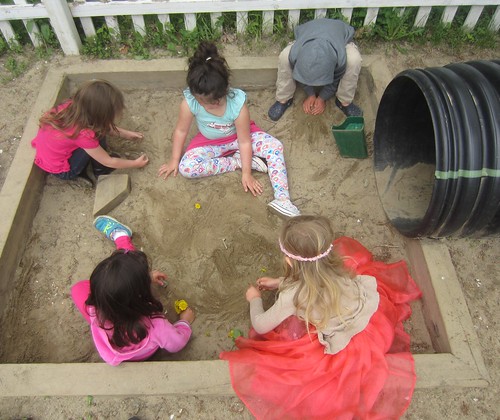 The apple tree blossomed, resulting in daily petal showers. The children stood under the branches while the soft white blossoms floated down to land in hair and hands. The snow white petals did not make sled pulling any easier, though they were out and about hauling children, vehicles, blocks, buckets, and worms.
The apple tree blossomed, resulting in daily petal showers. The children stood under the branches while the soft white blossoms floated down to land in hair and hands. The snow white petals did not make sled pulling any easier, though they were out and about hauling children, vehicles, blocks, buckets, and worms.
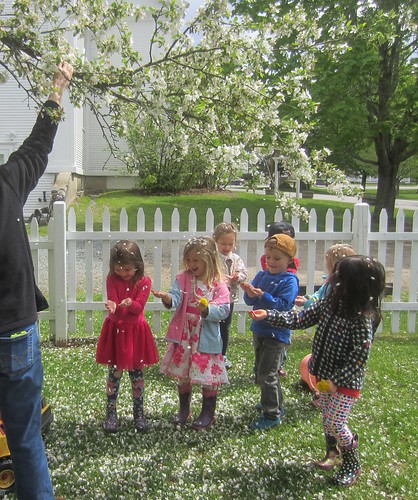
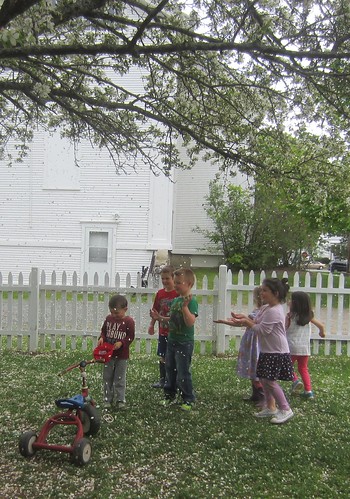
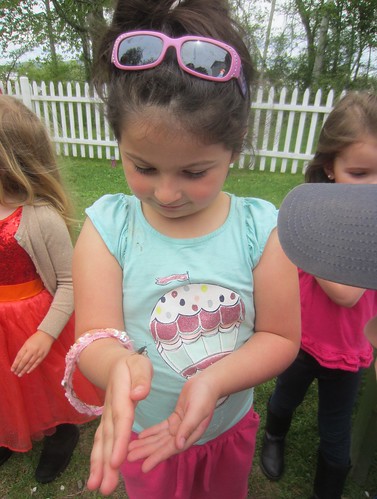
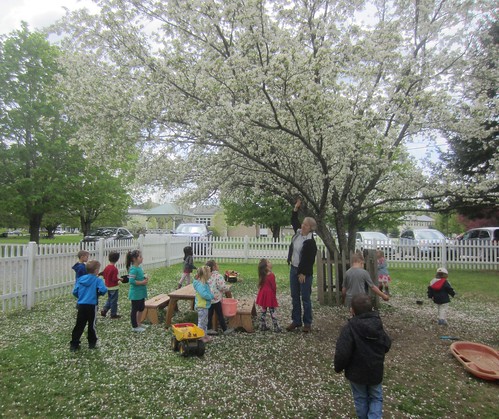

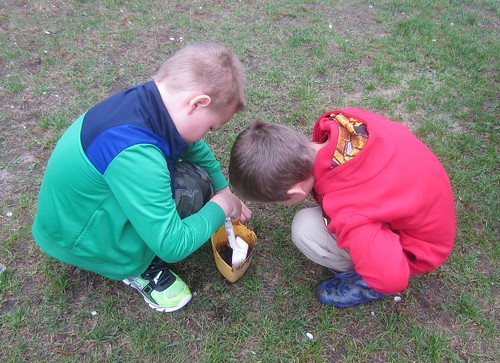


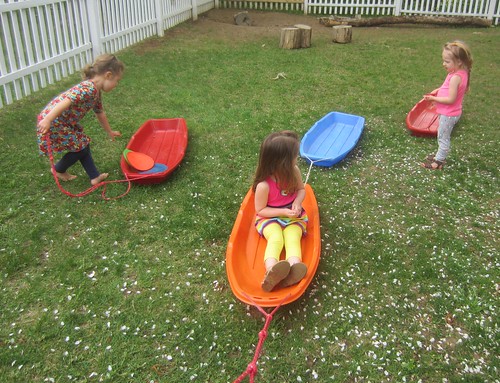
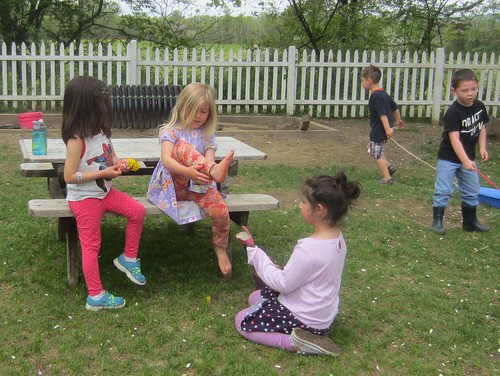
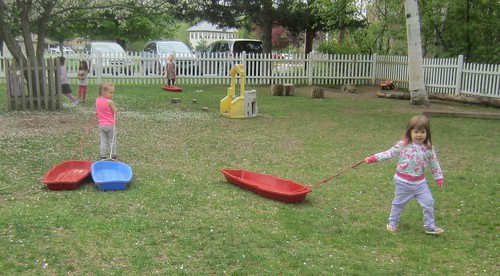
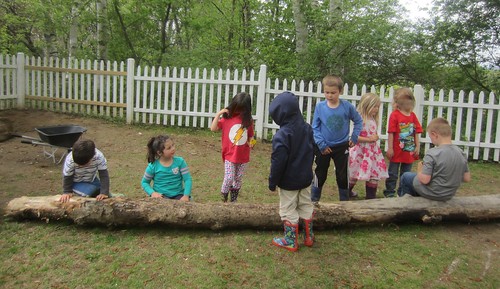
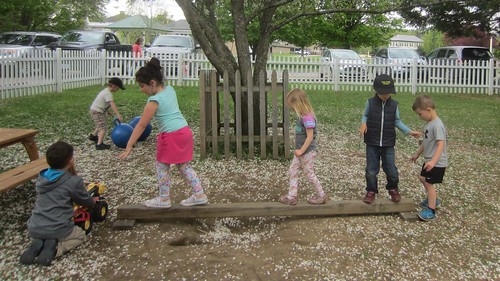

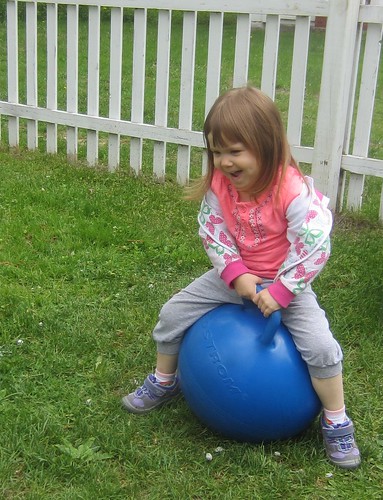


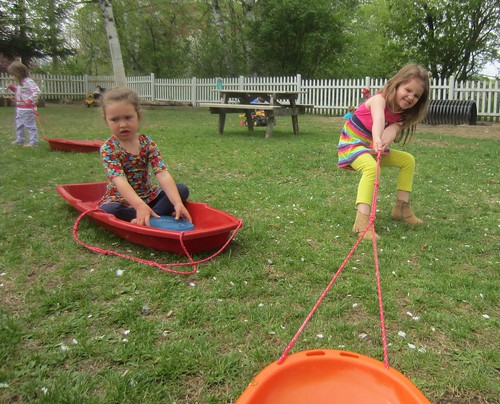
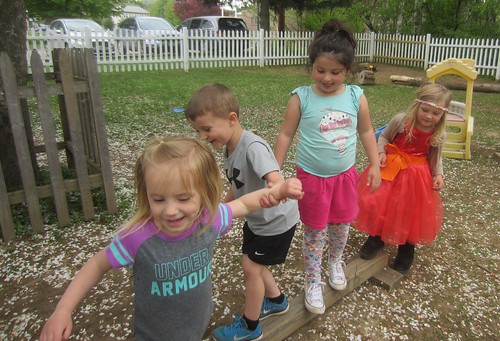
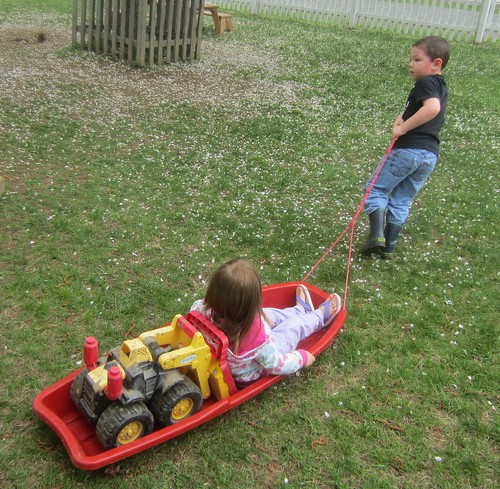

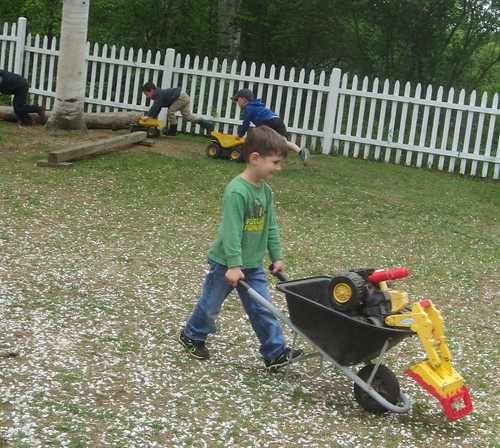
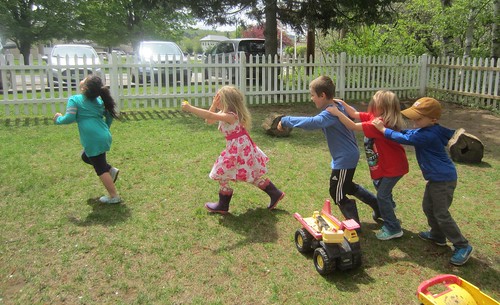 For art we read the book, Right Outside My Window, by Mary Ann Hoberman. We each chose a frame and drew a picture of what we might see outside our own windows. These fantastic works of art will be displayed for all to see on the last day of school.
For art we read the book, Right Outside My Window, by Mary Ann Hoberman. We each chose a frame and drew a picture of what we might see outside our own windows. These fantastic works of art will be displayed for all to see on the last day of school.
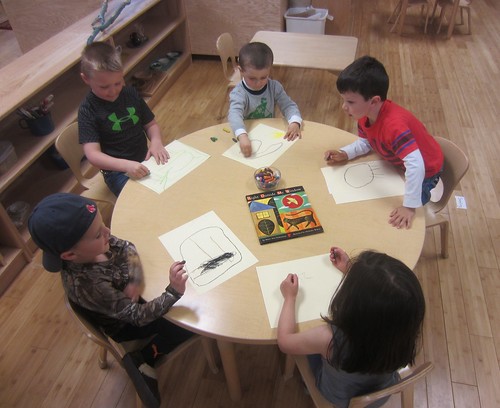 We continued our study of Australia with a very educational and engaging visit from Wozz, an Australian native. We enjoyed hearing his authentic Australian accent and learning some terms and phrases that differ from those we use here in the U.S., such as “G’Day mate” for good morning, “tea” rather than dinner, “brekkie” rather than breakfast, and “roo” for kangaroo. Wozz showed us pictures and told us about all kinds of Australian animals that are found only in Australia, including some very colorful birds, such as the lorikeet, cockatoo, and galah. We learned about marsupials, which are almost entirely located in Australia, and include wombats, whose pouches are backwards to keep out dirt, kangaroos, Tasmanian devils, wallabies, possums, and koalas. We prepared questions in the morning to ask Wozz, and we learned a lot of interesting things when we asked them. We learned that houses in Australia do not have basements and are built up off the ground so air can pass under to help cool them. We learned that all hoofed animals, including horses, which are called brumbies, camels, cows, and sheep were all imported and not native to Australia. We learned that Australia is home to 7 of the 10 most deadly snakes, including the brown snake, which is eaten by the kookaburra. Before departing, Wozz brought out a jar of vegamite, an Australian spread for toast made from yeast. Everyone was given the opportunity to taste it – though most declined in favor of smelling. Two brave souls tried some on a cracker and decided it was rather strong for them.
We continued our study of Australia with a very educational and engaging visit from Wozz, an Australian native. We enjoyed hearing his authentic Australian accent and learning some terms and phrases that differ from those we use here in the U.S., such as “G’Day mate” for good morning, “tea” rather than dinner, “brekkie” rather than breakfast, and “roo” for kangaroo. Wozz showed us pictures and told us about all kinds of Australian animals that are found only in Australia, including some very colorful birds, such as the lorikeet, cockatoo, and galah. We learned about marsupials, which are almost entirely located in Australia, and include wombats, whose pouches are backwards to keep out dirt, kangaroos, Tasmanian devils, wallabies, possums, and koalas. We prepared questions in the morning to ask Wozz, and we learned a lot of interesting things when we asked them. We learned that houses in Australia do not have basements and are built up off the ground so air can pass under to help cool them. We learned that all hoofed animals, including horses, which are called brumbies, camels, cows, and sheep were all imported and not native to Australia. We learned that Australia is home to 7 of the 10 most deadly snakes, including the brown snake, which is eaten by the kookaburra. Before departing, Wozz brought out a jar of vegamite, an Australian spread for toast made from yeast. Everyone was given the opportunity to taste it – though most declined in favor of smelling. Two brave souls tried some on a cracker and decided it was rather strong for them.
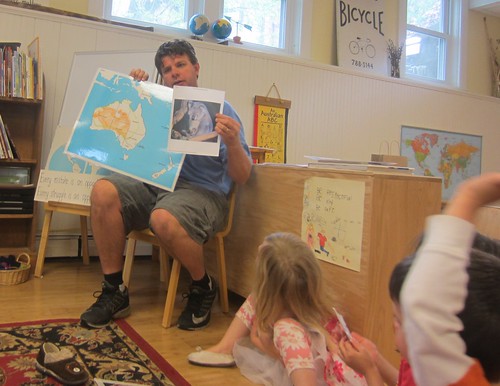
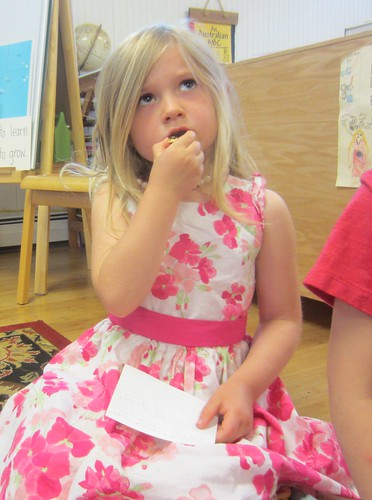
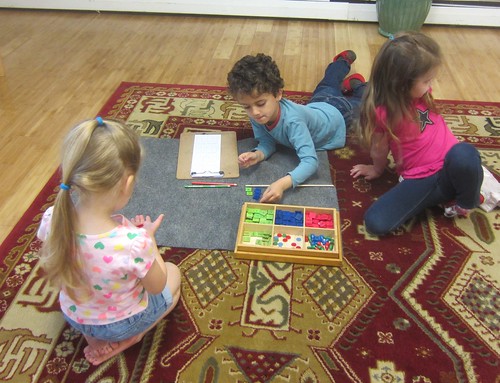
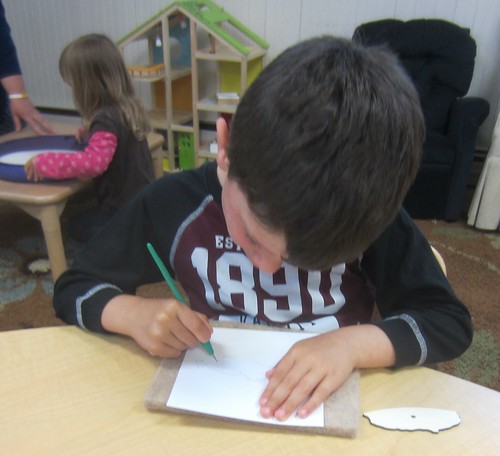
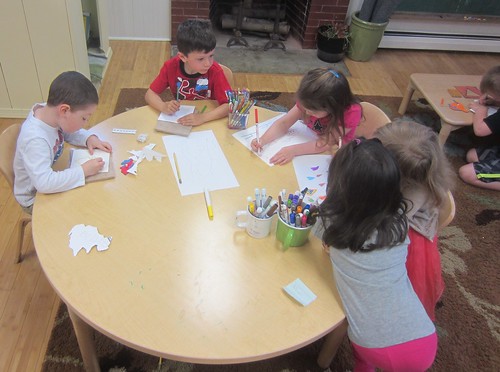
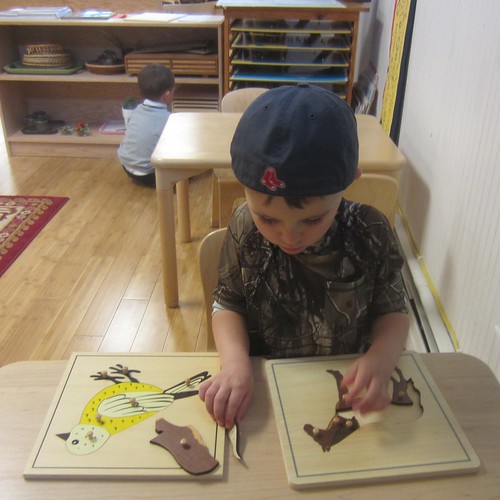
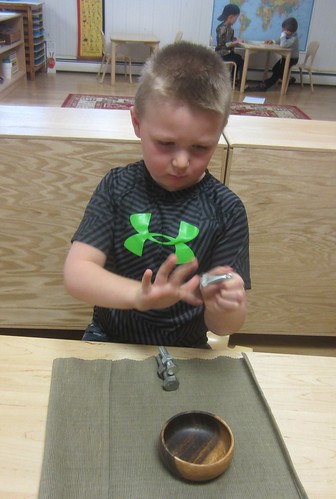
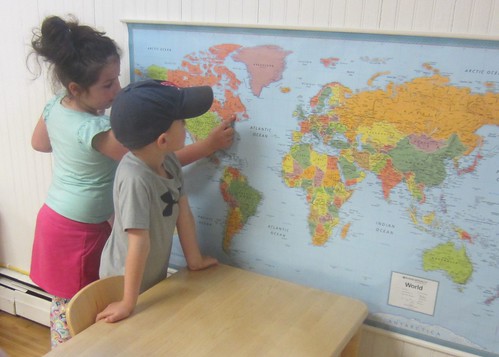



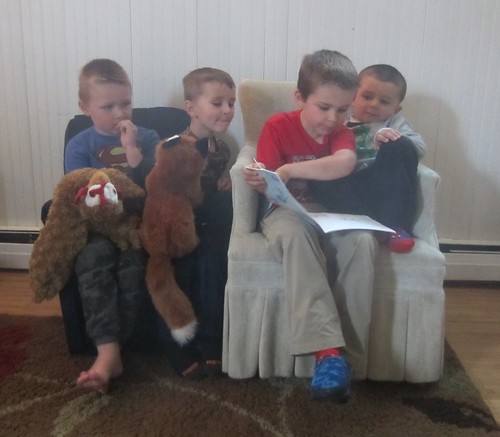
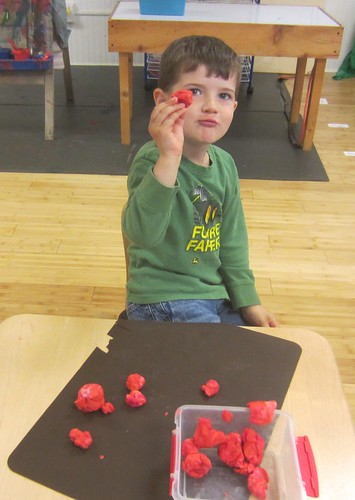

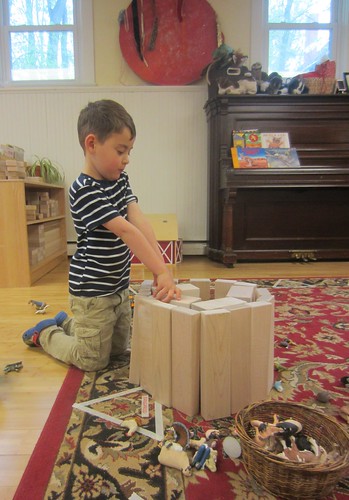
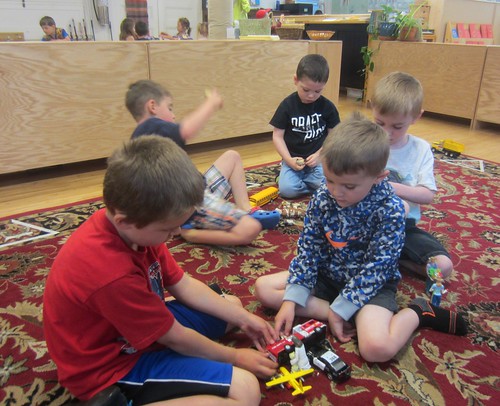

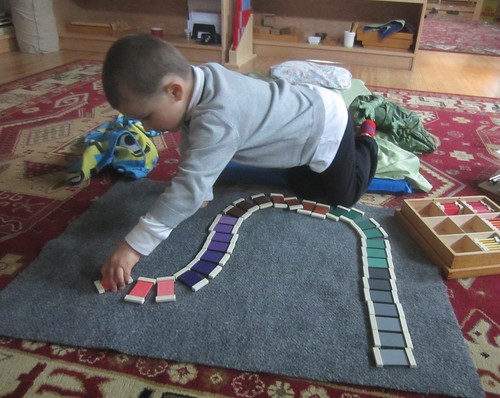

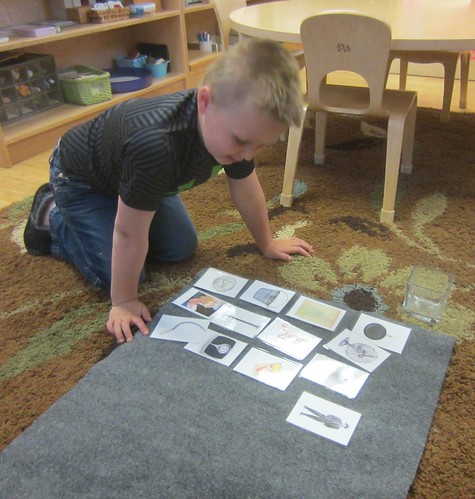
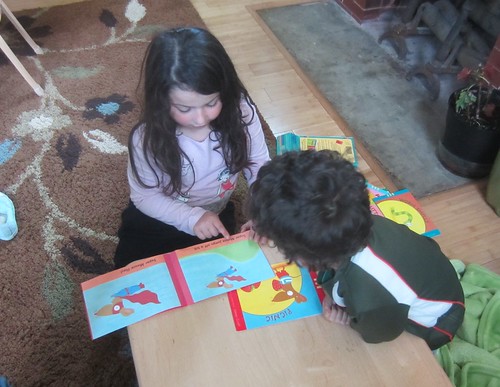 Everyone worked hard writing thank you notes for Wozz with pictures of their favorite things they learned about Australia. They drew koalas, kangaroos, tasmanian devils, houses, etc.
Everyone worked hard writing thank you notes for Wozz with pictures of their favorite things they learned about Australia. They drew koalas, kangaroos, tasmanian devils, houses, etc.

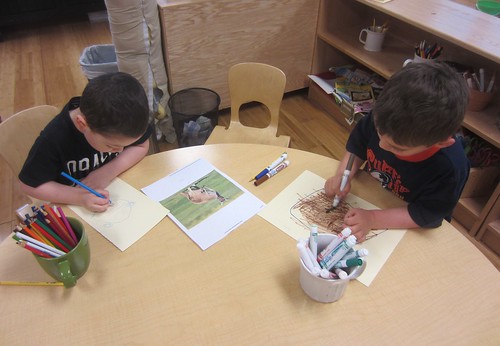
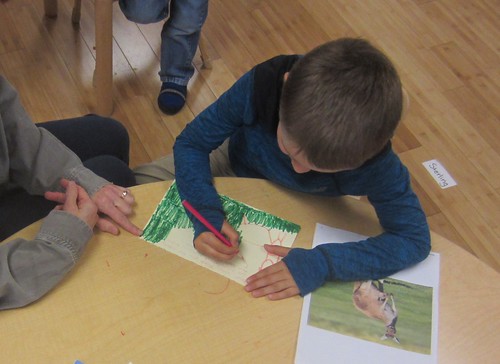
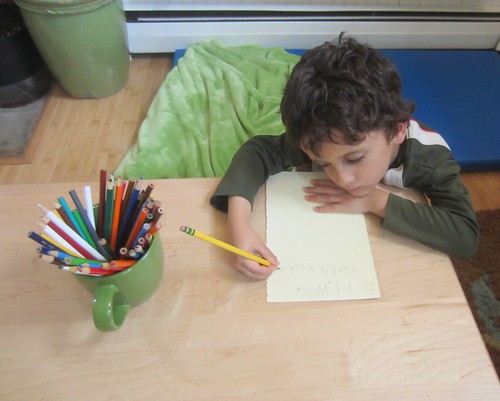 We celebrated a fourth birthday on Wednesday with tasty rice krispy treats. The birthday girl showed us her age by holding up four fingers, then orbited the candle sun with the globe as we counted the years and named the seasons. Happy Birthday newest four-year old!
We celebrated a fourth birthday on Wednesday with tasty rice krispy treats. The birthday girl showed us her age by holding up four fingers, then orbited the candle sun with the globe as we counted the years and named the seasons. Happy Birthday newest four-year old!
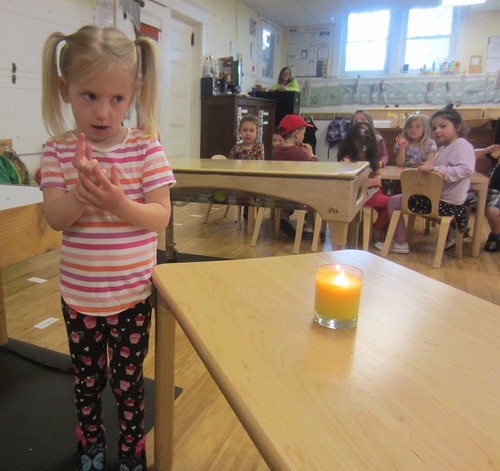
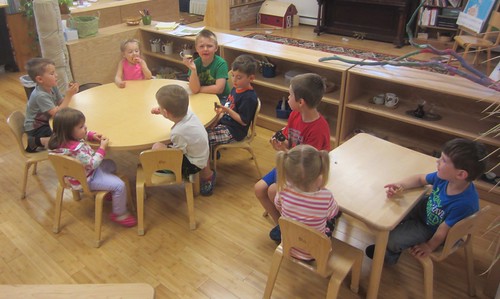 On Thursday we took out the ribbons to do some ribbon dancing. We swirled and twirled and jumped and twisted to some fun multicultural songs, moving our ribbons quickly, slowly, in big movements and small. We had so much fun dancing and waving our ribbons around!
On Thursday we took out the ribbons to do some ribbon dancing. We swirled and twirled and jumped and twisted to some fun multicultural songs, moving our ribbons quickly, slowly, in big movements and small. We had so much fun dancing and waving our ribbons around!
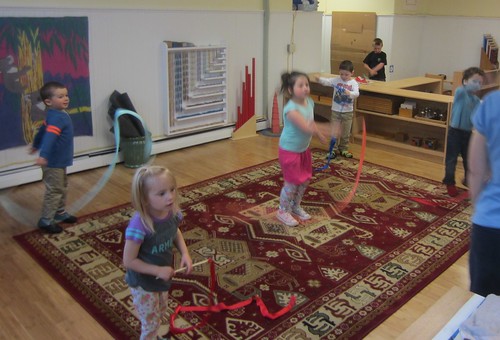
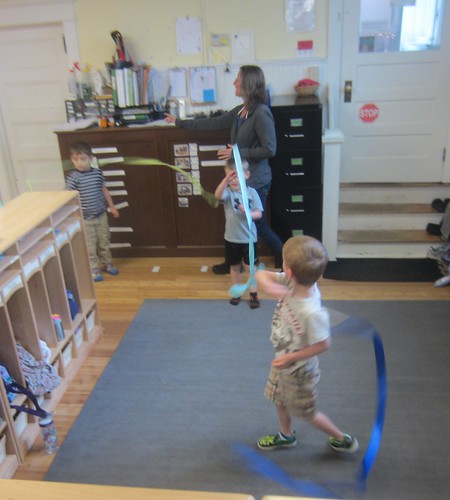
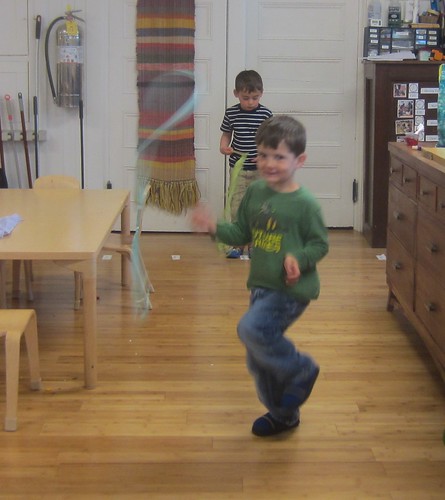
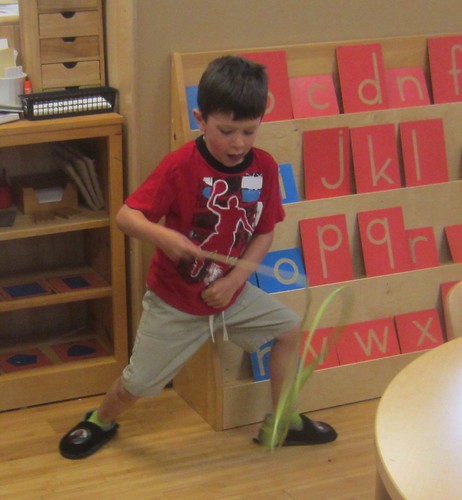
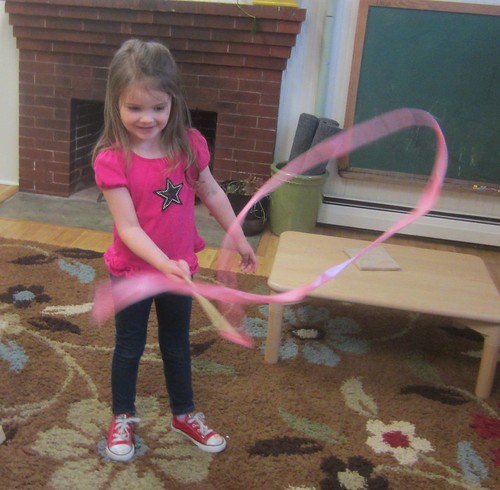

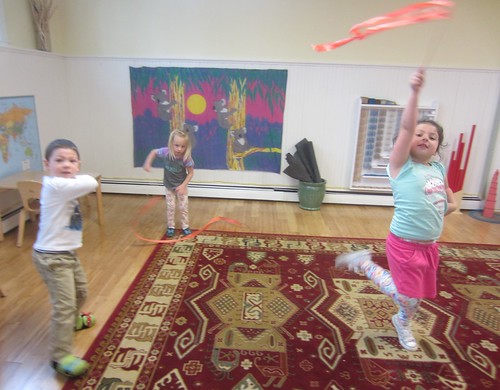 Friday students each chose a continent to introduce for our end of year performance. They began work on tracing their continent and coloring in the climate zones. They very carefully followed the lines on the map with a thin black marker, then used colored markers to fill in mountains, deserts, grasslands and forests. They thought about all the things they learned about their continent, and decided what information would be important for the audience to know. They will continue to finish up their maps and practice their introductions over the next couple of weeks.
Friday students each chose a continent to introduce for our end of year performance. They began work on tracing their continent and coloring in the climate zones. They very carefully followed the lines on the map with a thin black marker, then used colored markers to fill in mountains, deserts, grasslands and forests. They thought about all the things they learned about their continent, and decided what information would be important for the audience to know. They will continue to finish up their maps and practice their introductions over the next couple of weeks.
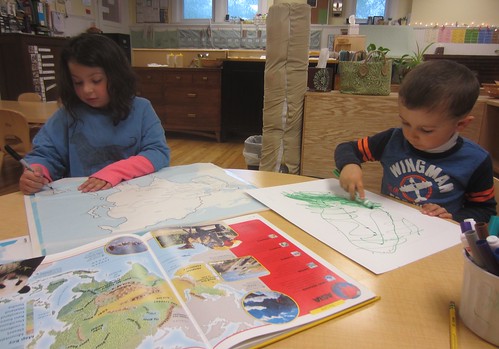
G’Day Mates!
May 28, 2017
